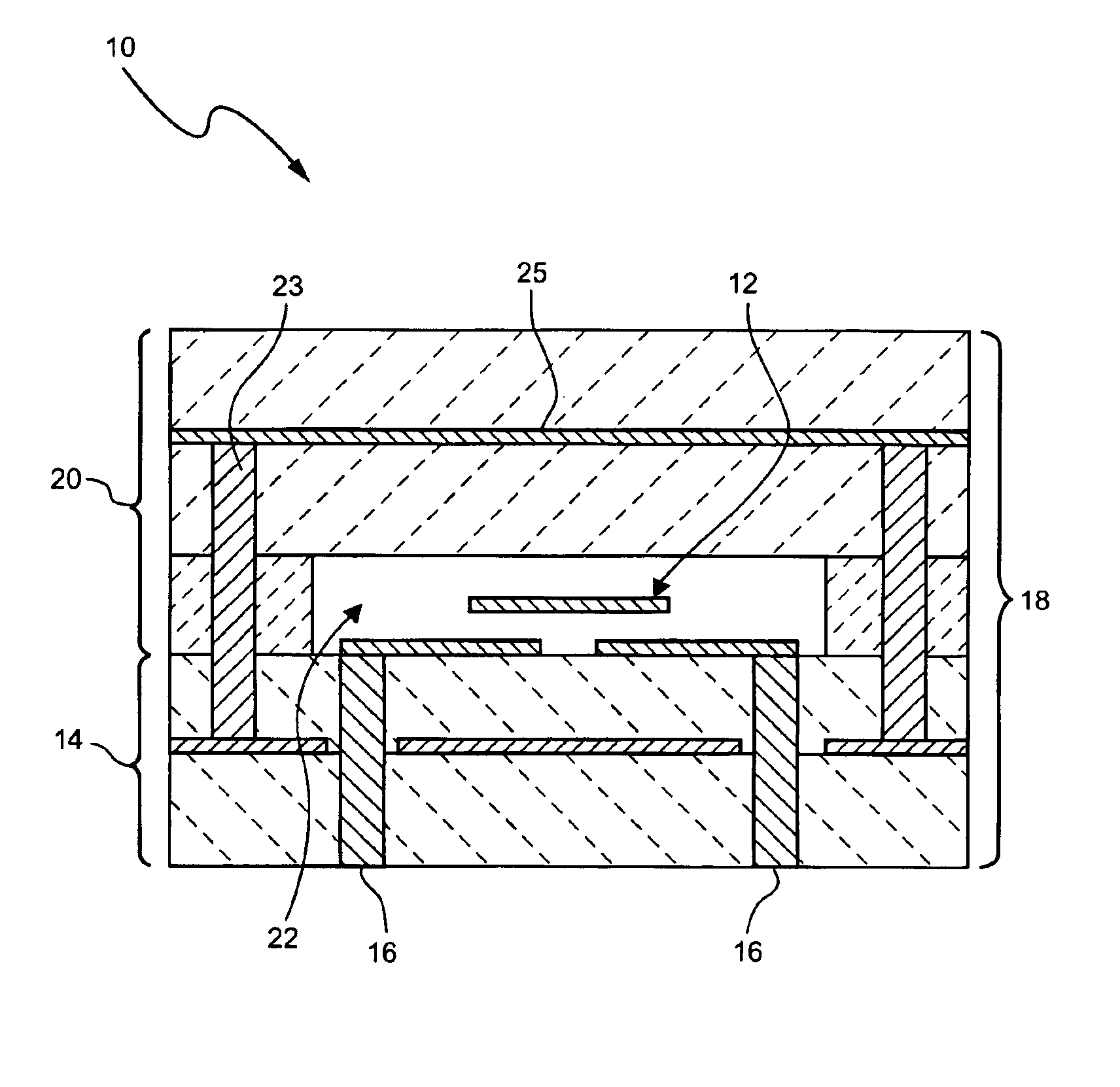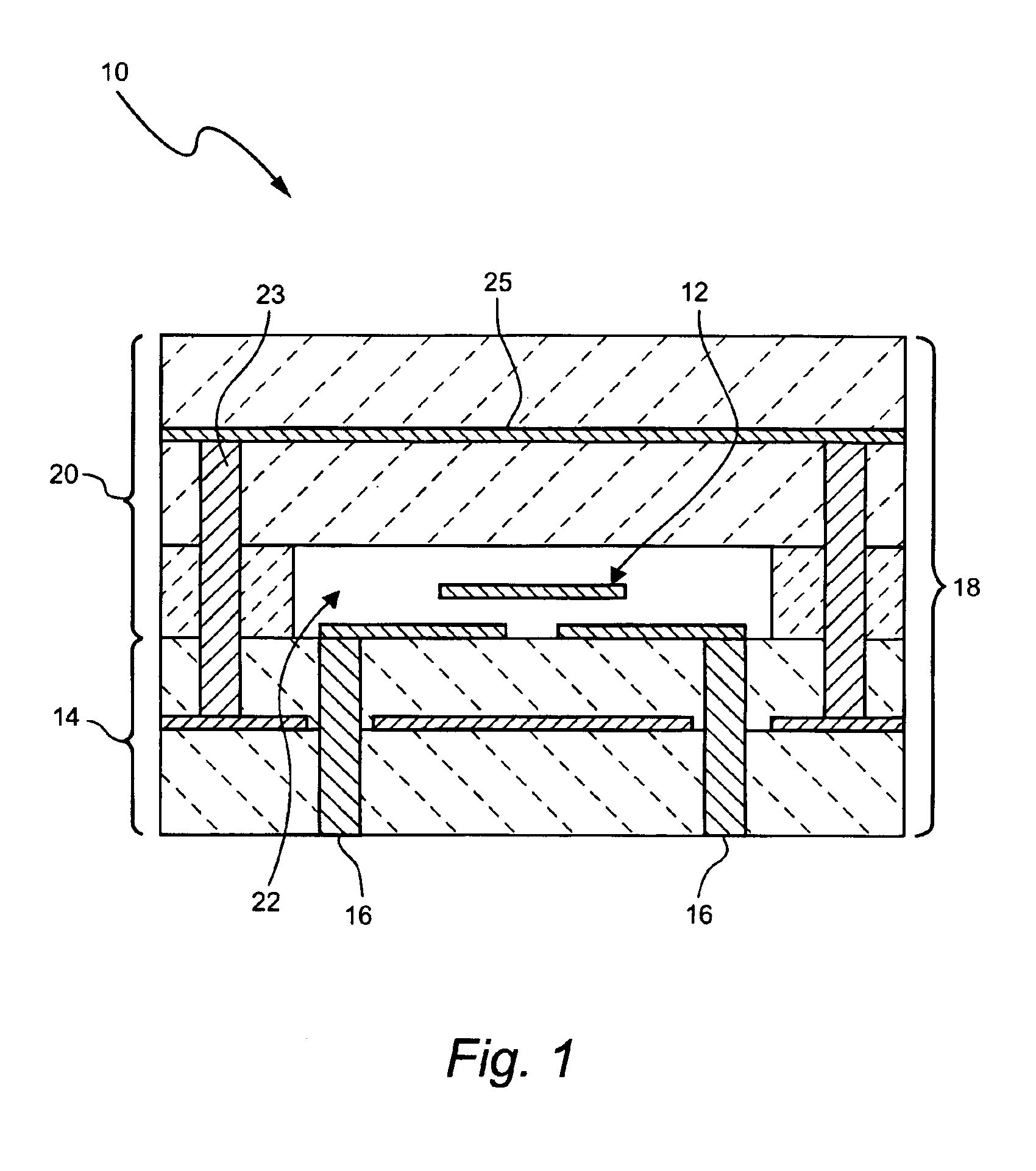MEMS-based variable capacitor
a variable capacitor and capacitor technology, applied in the field of variable capacitors, can solve the problems of no means or mechanisms by which the desired capacitance value can be actively maintained or adjusted, prior variable capacitors are prone to drifting from the desired capacitance value, etc., and achieves low loss tangent, high k factor value, and easy operation
- Summary
- Abstract
- Description
- Claims
- Application Information
AI Technical Summary
Benefits of technology
Problems solved by technology
Method used
Image
Examples
Embodiment Construction
[0056]The present invention is directed to a variable capacitor, either in discrete or integrated form, which is used in electronic circuits. A sectional view of the discrete variable capacitor device 10 of the present invention is shown in FIG. 1. Variable capacitor 10 merges an electrostatically actuated micromechanical device 12 on a multi-layered substrate 14 having continuous electrical connections 16 through the layers 18 forming substrate 14. A second, upper substrate 20, made from the same material as substrate 14, is used to enclose device 12 by selectively removing a portion of upper substrate 20 to form a cavity 22 therein. Substrates 14 and 20 are then bonded together to enclose and protect the variable capacitor device 12. The bonding of the two substrates 14 and 20 can be performed, such that the enclosed cavity 22 is under partial vacuum or contains an inert ambient which may have importance to the operation and reliability of the micromechanical device 12.
[0057]The m...
PUM
| Property | Measurement | Unit |
|---|---|---|
| frequencies | aaaaa | aaaaa |
| dielectric constant | aaaaa | aaaaa |
| applied actuation voltage | aaaaa | aaaaa |
Abstract
Description
Claims
Application Information
 Login to View More
Login to View More - R&D
- Intellectual Property
- Life Sciences
- Materials
- Tech Scout
- Unparalleled Data Quality
- Higher Quality Content
- 60% Fewer Hallucinations
Browse by: Latest US Patents, China's latest patents, Technical Efficacy Thesaurus, Application Domain, Technology Topic, Popular Technical Reports.
© 2025 PatSnap. All rights reserved.Legal|Privacy policy|Modern Slavery Act Transparency Statement|Sitemap|About US| Contact US: help@patsnap.com



